Outside France, the chanceries in London, Vienna, Berlin, and Saint Petersburg were well aware of the drawbacks suffered by Napoleon in Spain and made strategic plans for a future that seemed uncertain. Furthermore, the situation that the French emperor faced in his own country was not any more promising: not only were there all kinds of conspirators and plotters, but the French legislative body started to rebel against the emperor’s requests and believed that Vienna planned to march against France again with the intention to compel the rest of Europe to do so too.The die was cast. However, gathering the army that was to march on Vienna was more and more difficult, for Napoleon no longer counted on the army he had had a few years back. He had to work miracles to make up for his losses in Spain. Thus, the reorganization also required greater levies from the one hundred and fifteen French departments in order to be a match for the Confederation of the Rhine.
The battle on Austrian soil took place at Wagram, close to Vienna, on July 5th and 6th 1809, only six weeks after the French suffered a defeat at Aspern-Essling, and only when Napoleon had first fortified and sent troops to the island of Lobau on the Danube. Napoleon, who was still at his best, planned brightly everything to the last detail and conducted under fire one of his most memorable actions, which made him win the battle that day: the French crossed over the Danube, discovered the position held by the Archduke Charles and got their own back for their defeat a little earlier at Essling. The Archduke Charles was waiting in his position for reinforcements, 12,500 men that had to be sent by his younger brother, the Archduke John, from Pressburg (also known as Bratislava). The cunning action of Napoleon prevented these troops from taking part in the battle.
The figure shows the emperor Napoleon in his usual uniform as the colonel of Chasseurs of the Imperial Guard, not wearing his famous coat despite the fact that those summer days when the battle took place were not especially hot. In this case, Napoleon is using his spyglass to follow the course of the battle.
He is riding a German entire sorrel horse. The shabraque and the saddle are the ones he used to use in campaign, which also correspond to those used by most of his generals.
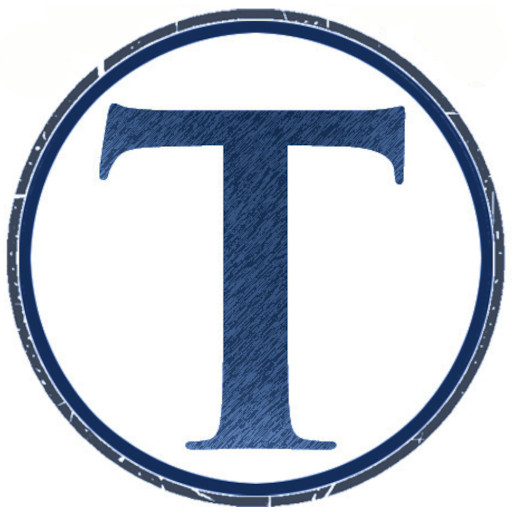
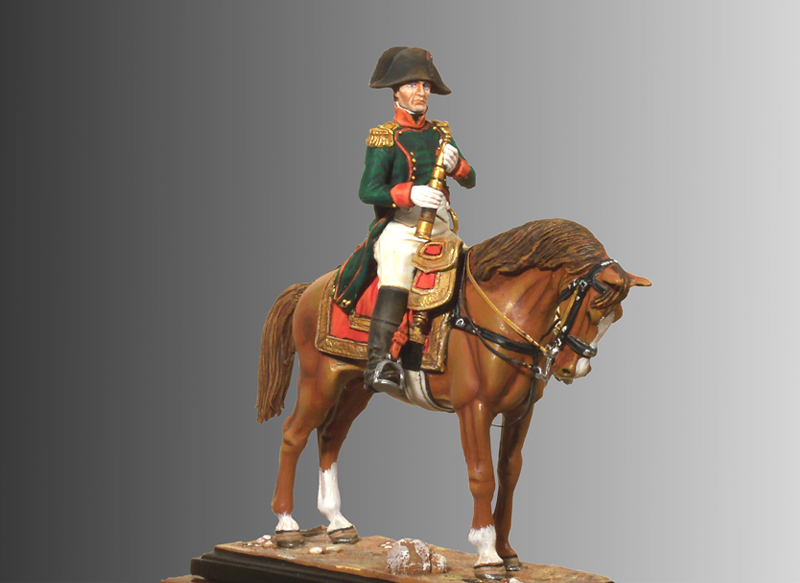
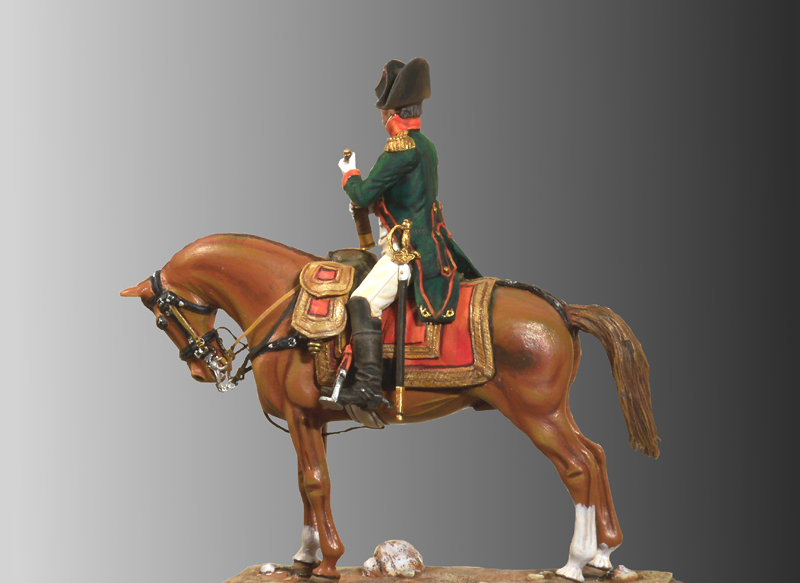


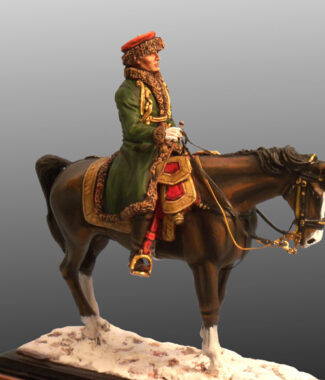
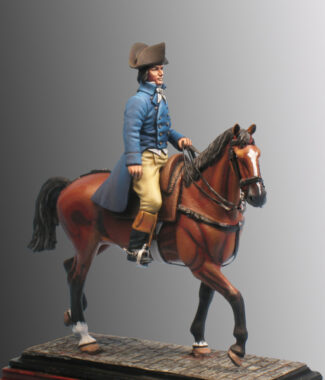
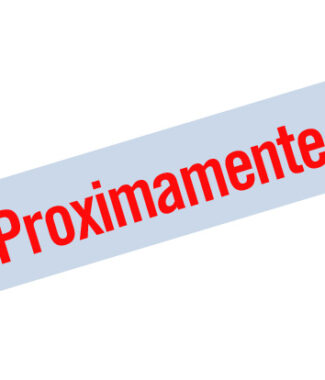
Valoraciones
No hay valoraciones aún.